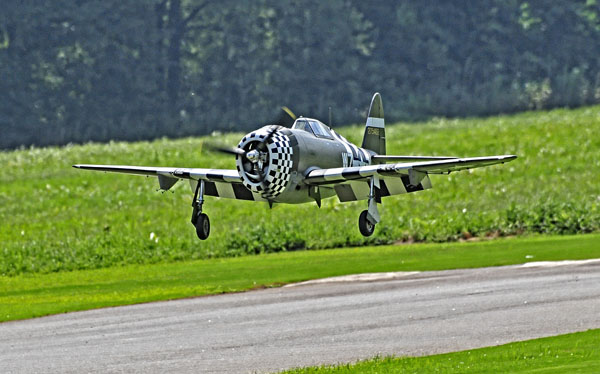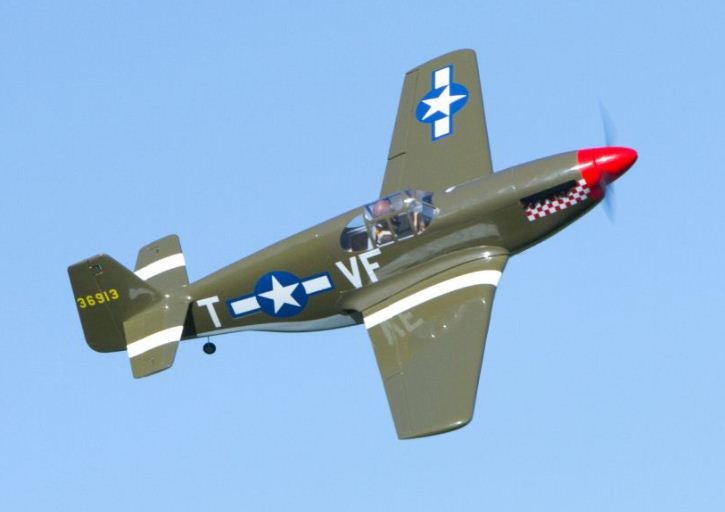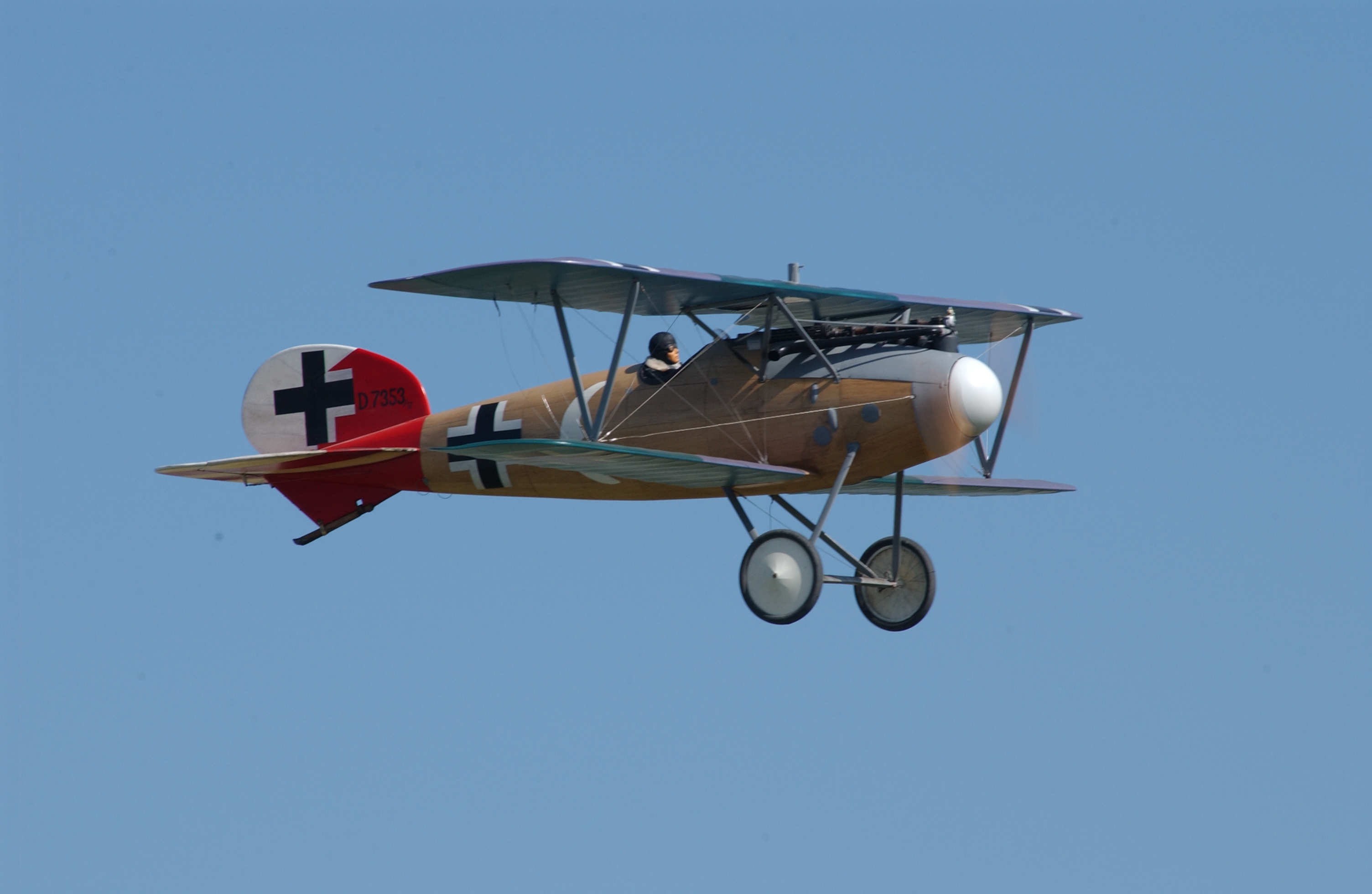Model Airplane News has devoted many articles and columns to the improving of static scores in scale competition. This score however, represents only 50 percent of your total, and taking the time to improve your model’s documentation material between events can definitely help you maximize overall score. But for this article, let’s talk about improving your flight scores and how to help both the pilot and the flight judges do their jobs correctly.
When you fly your model at a scale event, you will be faced with variable conditions, including:
• Wind direction. Wind has the biggest effect on models because it can change quickly during the day. It affects takeoff direction and the headings of the maneuvers flown. Plus, it is usually calmer in early morning and windier during midday.
• Position of the sun. The sun’s position often requires you to move your maneuver to the right or left of the flight judges; this is done for safety and is OK with them. But moving your maneuver can throw you off pace a bit and make you a bit uncomfortable.
• Flightline position. If you have to come in over a tree line to land, you may tend to fly the approach higher than normal. If your flight station is also close to the trees, your landings may be slightly past the judges’ centerline. Don’t expect perfect flightline placement.
• Field conditions. The runway can be grass or paved; either surface will greatly affect your model’s ground handling. The length of your takeoff will also be affected by the grass’s length, while paved surfaces are a nightmare for airplanes with non-steerable tailskids.
• Time of day. It might sound silly, but the time of day also has an effect on your flying. Early-morning flights are affected by the dew on the grass; it makes landings slippery. In the afternoon, heat rising off the pavement can cause turbulence. As the day goes on, crosswinds can replace calm conditions.
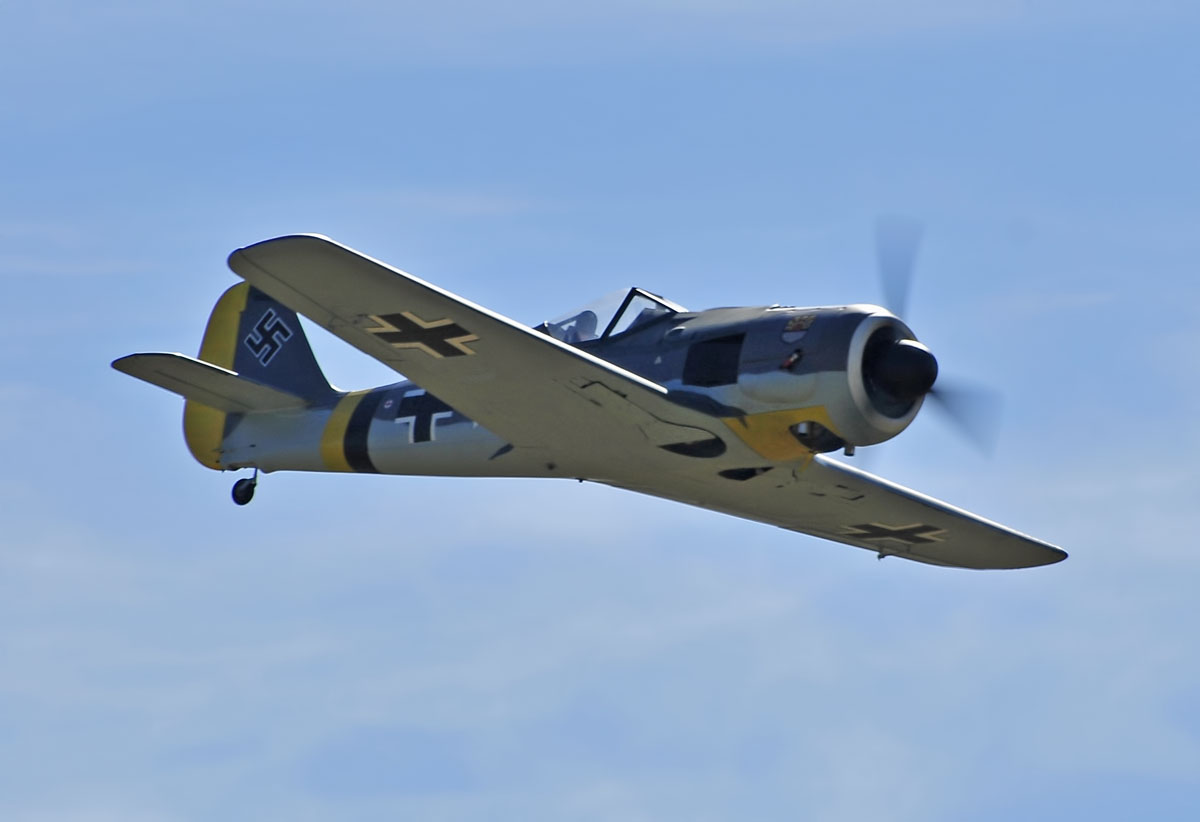
PRACTICE
To improve your ability to deal with changing conditions, you have to practice. If your club’s field has a grass runway, practice flying from it both when the grass is newly mown and when it’s overdue for a trim. Fly early in the morning and late in the afternoon; practice landings and takeoffs from both the left and the right. Fly on windy days, and when it’s calm. Experience will help you become a better competitor, and being prepared for change often means the difference between an average flight score and a good one.
AVOID CONFUSION
Preparation is a good thing for contestants, but I think it’s equally good for judges. They should be prepared to make allowances for field conditions, weather and unforeseen events. Most important, everyone needs to understand what the various flight maneuvers are supposed to look like and how they should be performed. I think it will be to everyone’s benefit if all participants (judges and pilots) refer to the AMA rules in the most recent Competition Regulations booklet. These guidelines separate maneuvers into three categories that are judged: Precision, Presentation and Realism. For the sake of consistency, give each category some thought (whether flying or judging them). Let’s take a closer look at these important areas to be judged.
• Precision. A contestant should always talk to the judges before beginning to fly and explain what each maneuver will consist of so the judges can form a mental image of the maneuver. Whatever you say you’ll be doing is what the judges will look for, so be certain to do what you said you would do! If you say that your Ju-87 Stuka dive-bomber will perform a 90-degree bombing dive before it releases its bomb, don’t dive the model at a 75-degree angle. Judging begins when the contestant announces “Beginning now!”, and it continues until he calls, “Maneuver complete!” After announcing the beginning of the maneuver, fly a straight course for about 50 feet before actually performing the maneuver. Do this at the end as well; fly 50 feet along a straight path before calling the maneuver complete. If done in a smooth, prototypical manner, course corrections are downgraded, but not severely. Most maneuvers should start and finish at the same altitude (exceptions to this are the split-S, 360- degree descending turn, 3-turn spin and the Immelmann turn). Keep your wings level, and don’t make abrupt altitude or heading changes during your maneuver. To maximize your precision score, you want to perform centered and balanced maneuvers.
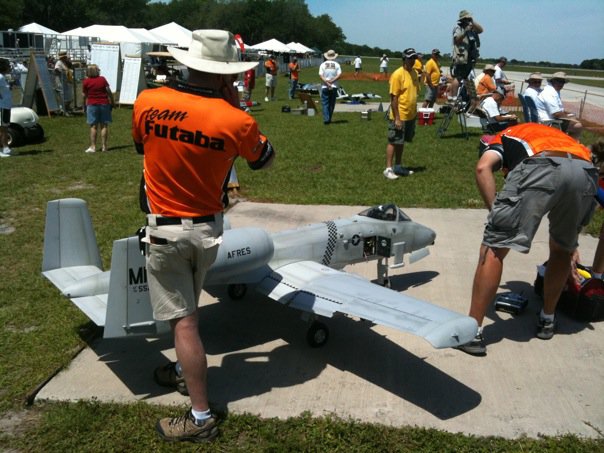
You can’t give the flight judges too much information before your flight. Don’t just say you’re going to execute a roll—be specific! Will it be a barrel roll or an axial roll? What should the judges look for? If you tell them, your score will be higher.
• Presentation. I love this part because it is so basic. For a maximum score, present your maneuvers so they can be judged easily. The best place to perform a maneuver so the judges have the best view of it depends on which maneuver you’re performing. For a clear view, a stall turn or a wing-over should be offset to the left or right of the judges. Maneuvers that have horizontal symmetry, such as loops and cobra rolls, should be positioned with their midpoints centered in front of the judges. It is also important to fly above the runway’s centerline or at the proper distance from the judges, as stated by the contest director (CD). This is an important safety issue, so pay attention at the pilots’ meeting.
If you move your maneuver to the left or the right of the judges because of the sun’s position, be sure to explain what you are doing. If you fly through the sun, you can receive a severe downgrade. Your presentation will also be affected by the aircraft you fly. A fast-moving jet or WW II fighter is best presented at a bit of a distance from the judges. Slower WW I or civilian aircraft benefit from being flown closer.
• Realism. It is difficult to explain how realism is scored because it is so subjective. To maximize your score, fly only those maneuvers that your aircraft was capable of doing in full scale. Hotshot pilots who perform three axial rolls with a model B-29 should expect a downgrade. For better realism, stick with prototypical maneuvers. The size of the maneuver should also reflect the aircraft’s capabilities. A jet could make very large loops at high speed, but performing small, tight loops would result in a downgrade because in the full-size plane, the pilot would have been subjected to high-G forces. A J-3 Piper Cub would be capable of making loops, but because of the Cub’s limited power, the loops would have to be somewhat small in diameter and more oval than perfectly round. A pilot who performed high-speed loops with this type of plane would be significantly downgraded. Aircraft size may also affect a pilot’s Realism score. A 1/4-scale Sopwith Pup is expected to perform larger maneuvers than a 1/8-scale Pup. It is very important to account for the scale size and speed of your plane. Smooth, graceful flight presentations have a great impact on realism. Judges often pretend to be passengers in the aircraft they are judging. Jerky, bumpy flying is unrealistic and will hurt your flight score. Abrupt takeoffs and landings also cause downgrades.
COMPILATION
Placement, Presentation and Realism make up equal parts of the flight-scoring process. At some events, Realism is treated as a separate flight maneuver worth 10 points, and it is evaluated during and between each maneuver you fly. These 10 points are more of an overall grade of how realistically you performed with your aircraft. In general, flight judging is more difficult than static judging because it relates to how we think the prototype aircraft flew. When your model is static-judged, it is compared to your documentation booklet and your 3-view drawing. If you talk to the flight judges beforehand and tell them what your maneuvers will look like, it will help them to score you more consistently. Are there other factors that affect flight scores? Yes; the basics—being polite, being organized and being ready to fly when you’re called to the ready box—will undoubtedly help. Improving your flight score is an ongoing process.
THE JUDGES’ POINT OF VIEW
Let’s face it. Flying in competition isn’t easy. The AMA rulebook covers scoring downgrades quite specifically, but when it comes to Presentation, I feel that the judges should focus on maneuver position using three references: looking upward, looking to the sides and looking straight ahead. I prefer to work with 1/4-point deductions because they are fairer to pilots who fly many different types of airplanes.
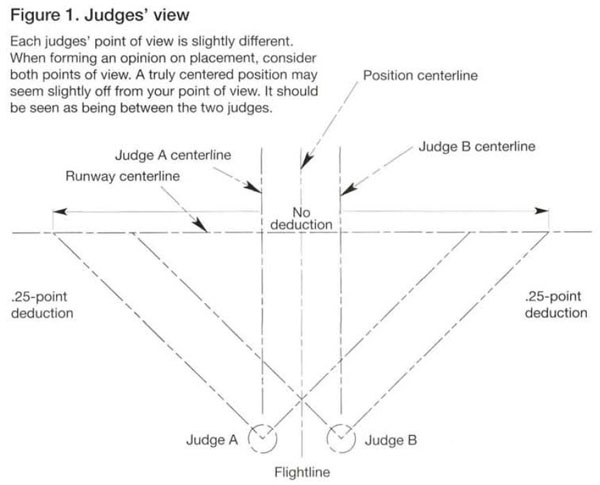
Figure 1 shows how two judges sitting together can have varying perspectives when viewing a maneuver that’s being performed right in front of them. Each judge should be aware that a maneuver that appears to be to his right or left may actually be placed correctly in the center. I don’t think this “middle ground” should have any downgrades applied for placement, and each outer area should use an ascending Vi-point deduction.
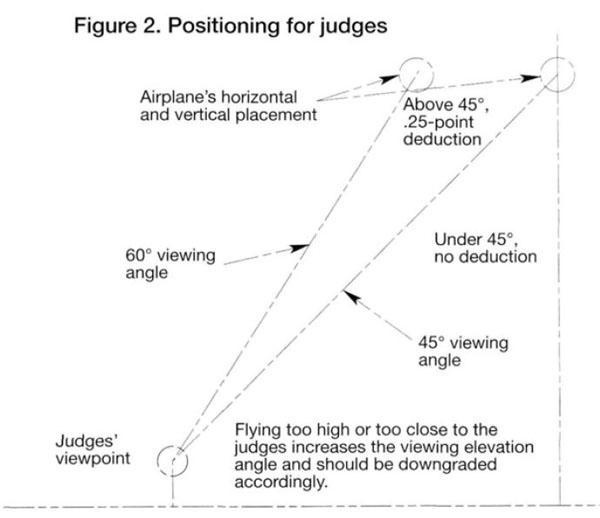
Figure 2 shows a side view that uses a 45-degree angle to establish its upper boundary. Downgrades are given for flying above it or for flying too close to the judges. Again, there are no downgrades for flying below the 45-degree angle. If a pilot performs a stall turn, a spin, or a specific high maneuver, and the highest part of his maneuver is above the 45-degree angle, his score is not downgraded.
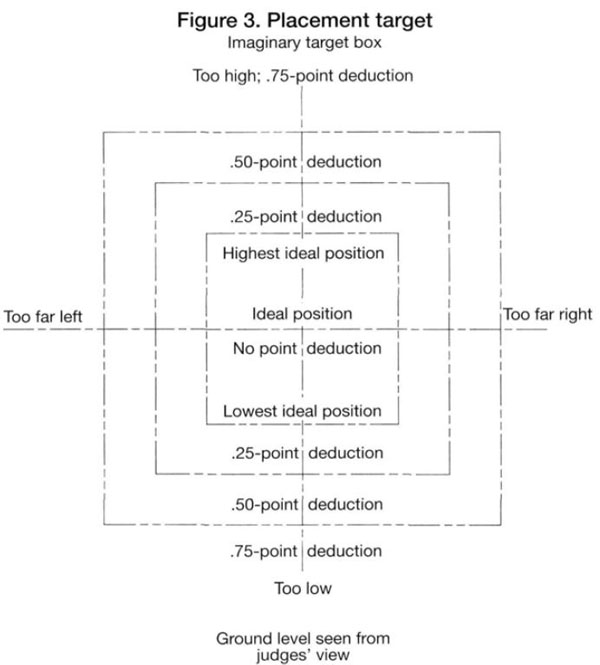
Figure 3 shows what the judges see when they look straight at the flying field from their seats. Each maneuver requires its own interpretation for the “ideal flying zone,” but once that has been done, all downgrades should follow the same standard. By using Viewpoint downgrades, a judge can determine if the maneuver is positioned too far off center, too high, too low, too far away from the flightline, or if it is too large. If we keep in mind that the pilot must still perform his maneuver with regard to perfection and realism, I think the 1/4-point deduction system is a fair way to score.
